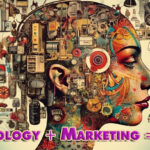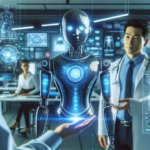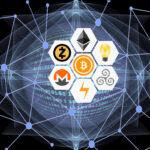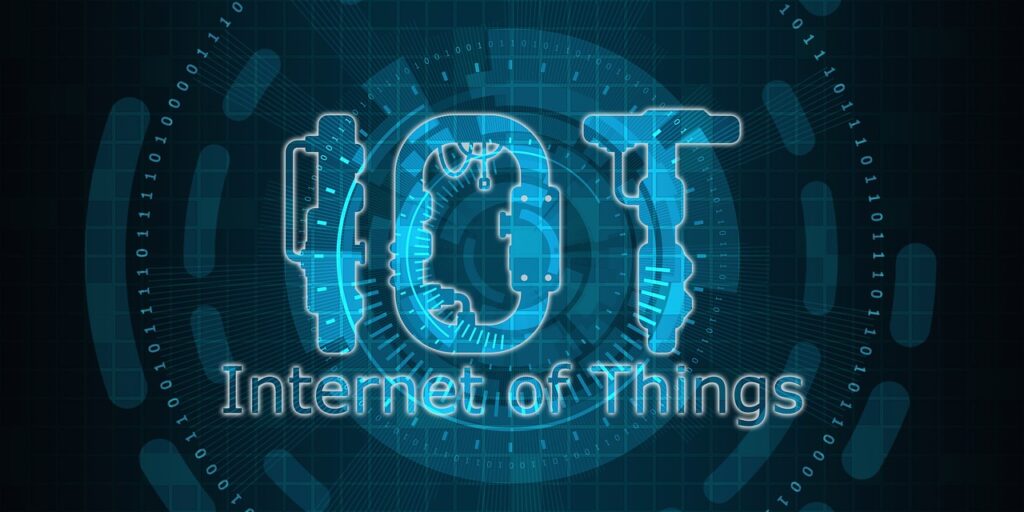
Introduction
In today’s fast-paced digital landscape, the Internet of Things (IoT) has emerged as a game-changer, revolutionizing the way we interact with technology and the world around us. From smart homes to industrial automation, IoT seamlessly integrates devices, sensors, and data to enhance efficiency, productivity, and convenience. Let’s embark on a journey through the boundless possibilities of IoT and unravel its myriad applications and implications.

Understanding the Internet of Things (IoT)
The Internet of Things (IoT) refers to a vast network of interconnected devices that communicate and exchange data with each other through the internet. These devices can range from everyday objects like smartphones, wearables, and home appliances to industrial machinery and sensors embedded in infrastructure. The key concept behind Internet of Things (IoT) is the ability of these devices to collect and share data in real-time, enabling them to be monitored, controlled, and optimized remotely.
This interconnectedness allows for automation, efficiency improvements, and the creation of new services and applications across various sectors, including healthcare, transportation, agriculture, and smart cities. However, with the proliferation of Internet of Things (IoT) devices comes concerns about data security, privacy, and interoperability standards. As IoT continues to evolve, its potential to revolutionize how we interact with technology and the world around us is becoming increasingly evident.
Embracing Connectivity
The Internet of Things (IoT) thrives on the concept of connectivity, facilitating seamless communication between devices and systems. By leveraging various wireless protocols such as Wi-Fi, Bluetooth, and RFID, Internet of Things (IoT) devices establish networks that enable data exchange and remote monitoring, paving the way for unprecedented levels of automation and control.
Data-driven Insights
At the heart of the Internet of Things (IoT) lies data, often described as the new currency of the digital age. Internet of Things (IoT) devices generate vast amounts of data through sensors and actuators, providing valuable insights into user behavior, environmental conditions, and operational performance. This data serves as the foundation for informed decision-making, predictive analytics, and optimization strategies across diverse domains.
Enhanced Efficiency and Productivity
One of the primary benefits of IoT is its ability to streamline processes and enhance efficiency across various sectors. In industrial settings, IoT-powered solutions optimize production workflows, monitor equipment health in real-time, and minimize downtime through predictive maintenance. Similarly, in smart cities, Internet of Things (IoT) technologies enable efficient resource management, traffic optimization, and environmental monitoring, fostering sustainable urban development.
Empowering Personalization
In the realm of consumer electronics, Internet of Things (IoT) enables personalized experiences tailored to individual preferences and needs. Smart home devices, for instance, can adapt lighting, temperature, and entertainment settings based on user habits and preferences, creating a more comfortable and convenient living environment. Likewise, wearable IoT devices track health metrics, fitness goals, and sleep patterns, empowering users to make informed lifestyle choices and improve overall well-being.
Challenges and Considerations
While Internet of Things (IoT) holds immense promise, its widespread adoption is not without challenges and considerations. Security and privacy concerns loom large, with the proliferation of connected devices increasing the potential for data breaches and cyber attacks. Additionally, interoperability issues and standardization gaps pose obstacles to seamless integration and collaboration across Internet of Things (IoT) ecosystems. Addressing these challenges requires concerted efforts from industry stakeholders, policymakers, and cybersecurity experts to ensure the safe and responsible deployment of IoT solutions.
Exploring IoT Applications Across Industries
The Internet of Things (IoT) is revolutionizing industries across the board by offering innovative solutions to age-old challenges. In agriculture, Internet of Things (IoT) sensors are deployed to monitor soil moisture levels, weather conditions, and crop health, enabling farmers to optimize irrigation, enhance crop yield, and reduce water usage. This technology also facilitates precision agriculture techniques, such as automated machinery and drones equipped with sensors and cameras, allowing farmers to monitor fields remotely and make data-driven decisions in real-time.
Healthcare Revolution
In healthcare, Internet of Things (IoT) is revolutionizing patient care delivery, remote monitoring, and medical diagnostics. Wearable devices equipped with biometric sensors track vital signs in real-time, enabling healthcare professionals to monitor patients’ health status remotely and intervene promptly in case of emergencies. IoT-powered telemedicine platforms facilitate virtual consultations, improving access to healthcare services and reducing the burden on traditional healthcare infrastructure.
Smart Agriculture Solutions
In agriculture, IoT technologies empower farmers with actionable insights to optimize crop yield, resource utilization, and environmental sustainability. Smart sensors embedded in soil, crops, and livestock monitor moisture levels, nutrient content, and animal health parameters, enabling data-driven decision-making and precision farming practices. By leveraging IoT-enabled automation and predictive analytics, farmers can mitigate risks, maximize productivity, and ensure food security in an increasingly volatile climate.
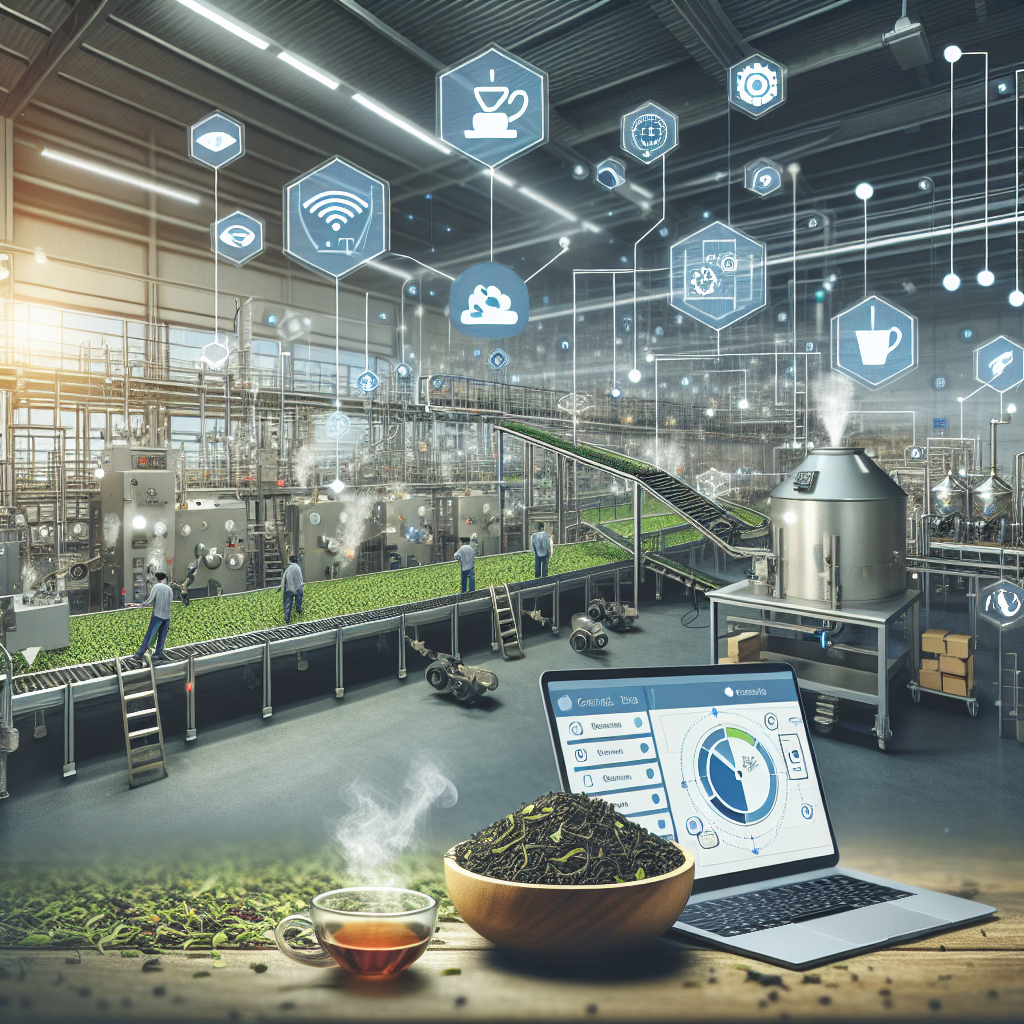
Industrial IoT (IIoT) Transformations
The Industrial Internet of Things (IIoT) is reshaping traditional manufacturing processes, supply chain management, and asset maintenance strategies. Connected sensors and IoT-enabled machinery facilitate real-time monitoring of production lines, equipment performance, and inventory levels, enabling predictive maintenance and just-in-time logistics. IIoT solutions optimize energy consumption, reduce waste, and enhance overall operational efficiency, driving cost savings and competitive advantage for businesses.
Smart Cities for Sustainable Living
In the realm of urban planning and development, IoT plays a pivotal role in building smart, sustainable cities of the future. Smart grids and energy management systems optimize resource distribution, reduce carbon emissions, and enhance energy efficiency across buildings and infrastructure. IoT-enabled transportation systems facilitate intelligent traffic management, public transit optimization, and congestion mitigation, promoting eco-friendly mobility options and enhancing urban livability.
Overall, IoT applications are reshaping industries by offering unprecedented levels of connectivity, data insights, and automation. As technology continues to advance, the potential for IoT to revolutionize how we live, work, and interact with the world around us is limitless. However, as with any transformative technology, addressing concerns related to data security, privacy, and interoperability remains crucial to realizing the full potential of IoT across industries.
The Future of Internet of Things (IoT): Trends and Innovations
As Internet of Things (IoT) continues to evolve, several key trends and innovations are poised to shape its trajectory in the years to come. From edge computing and 5G connectivity to artificial intelligence and blockchain integration, the future of Internet of Things (IoT) promises unparalleled levels of connectivity, intelligence, and security. Let’s explore some emerging trends that are driving the next wave of IoT innovation.
Edge Computing: Bringing Intelligence Closer to the Source
Edge computing is a paradigm that brings computational intelligence closer to the data source, enabling faster processing and response times while reducing latency and bandwidth usage. Unlike traditional cloud computing, where data is processed in centralized data centers located remotely, edge computing moves data processing and analysis closer to where the data is generated, typically at the edge of the network or on connected devices themselves.
By leveraging edge computing, organizations can harness the power of real-time data analytics and decision-making without relying solely on cloud infrastructure. This is particularly beneficial in scenarios where immediate action is required or where network connectivity may be unreliable or limited, such as in industrial automation, autonomous vehicles, or remote monitoring applications.
One of the key advantages of edge computing is its ability to process and analyze data locally, allowing for faster response times and reduced latency. This is critical in applications such as autonomous vehicles, where split-second decisions can have life-saving implications. Additionally, edge computing helps alleviate the strain on network bandwidth by filtering and processing data locally before transmitting only relevant information to the cloud for further analysis or storage.
Furthermore, edge computing enables organizations to extract actionable insights from data in near real-time, facilitating quicker decision-making and enabling new use cases and applications. For example, in retail environments, edge computing can be used to analyze customer behavior and preferences in-store, allowing retailers to personalize marketing messages or adjust inventory levels on the fly.
Overall, edge computing represents a paradigm shift in how data is processed, analyzed, and acted upon, offering significant advantages in terms of speed, efficiency, and scalability. As the proliferation of connected devices and IoT continues to grow, edge computing will play an increasingly important role in enabling the next generation of intelligent and responsive applications and services.
.
5G Connectivity: Enabling Hyperconnectivity and Low Latency
5G connectivity represents a monumental leap forward in telecommunications technology, promising to revolutionize connectivity with its ability to deliver hyperconnectivity and ultra-low latency. Unlike its predecessors, 5G networks offer significantly faster data speeds, enabling seamless communication and connectivity between devices, regardless of location. This advancement is particularly crucial in an increasingly interconnected world, where the proliferation of IoT devices, autonomous vehicles, and augmented reality applications demand reliable and high-speed connectivity.
One of the defining features of 5G technology is its ultra-low latency, which refers to the minimal delay in data transmission between devices. This near-instantaneous response time is essential for applications that require real-time interaction, such as remote surgery, autonomous vehicles, and immersive gaming experiences. With 5G, the latency is reduced to mere milliseconds, opening up a plethora of new possibilities for innovation and technological advancement across various industries.
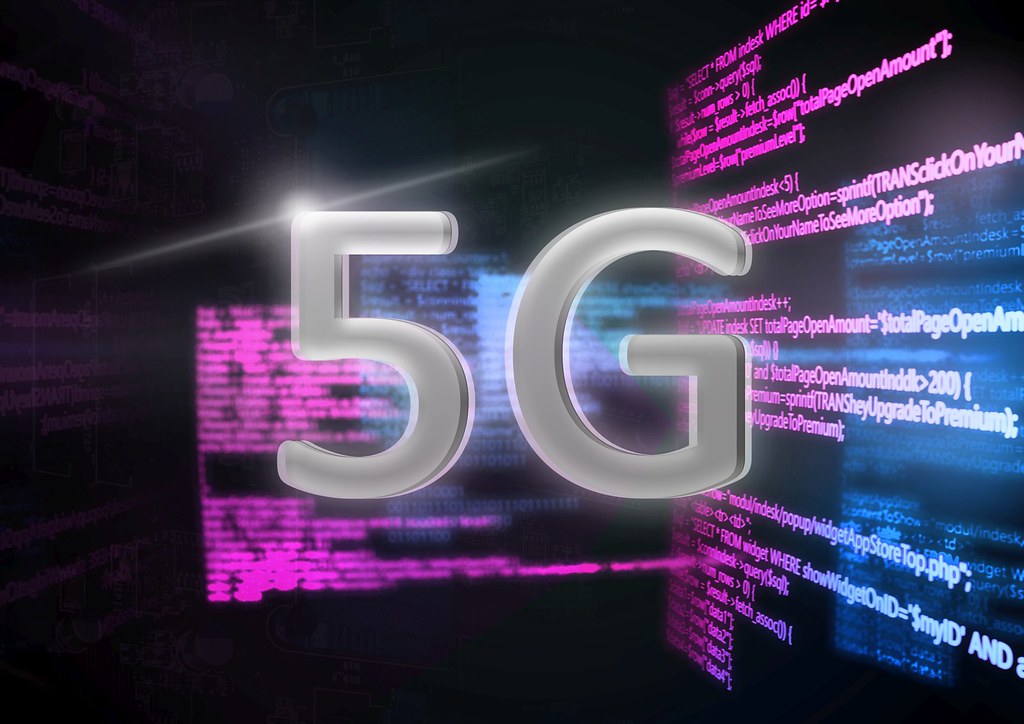
Moreover, 5G connectivity enables hyperconnectivity on an unprecedented scale, connecting not only smartphones and computers but also a vast array of IoT devices, sensors, and machines. This interconnected network facilitates the exchange of massive amounts of data in real-time, paving the way for the development of smart cities, intelligent transportation systems, and efficient industrial processes. By seamlessly integrating billions of devices into a cohesive network, 5G lays the foundation for a more connected and intelligent world.
Additionally, the high bandwidth capabilities of 5G networks allow for the transmission of large volumes of data at lightning-fast speeds, making bandwidth-intensive applications such as high-definition video streaming, virtual reality, and augmented reality more accessible and immersive. This opens up new avenues for entertainment, communication, and collaboration, enhancing the way we interact with digital content and each other.
In conclusion, 5G connectivity represents a transformative leap forward in telecommunications technology, enabling hyperconnectivity and ultra-low latency that will redefine how we communicate, work, and live in the digital age. As 5G networks continue to roll out globally, they will unlock new opportunities for innovation and drive the development of next-generation applications and services that will shape the future of connectivity.
AI and Machine Learning Integration
The integration of artificial intelligence (AI) and machine learning represents a groundbreaking advancement in technology, with far-reaching implications across various industries and applications. AI refers to the simulation of human intelligence in machines, enabling them to perform tasks that typically require human cognition, such as learning, problem-solving, and decision-making. Machine learning, a subset of AI, focuses on developing algorithms that allow computers to learn from and make predictions or decisions based on data without explicit programming.
By integrating AI and machine learning into existing systems and processes, organizations can unlock new levels of efficiency, productivity, and innovation. In fields such as healthcare, AI-powered diagnostic tools can analyze medical images, detect patterns, and assist healthcare professionals in diagnosing diseases more accurately and quickly. Similarly, in finance, machine learning algorithms can analyze vast amounts of financial data to identify trends, detect anomalies, and make investment decisions with greater accuracy and speed.
Moreover, AI and machine learning integration enables personalized experiences and recommendations across various consumer-facing industries. In e-commerce, for example, recommendation engines powered by machine learning algorithms analyze user behavior and preferences to provide personalized product recommendations, enhancing the shopping experience and increasing customer satisfaction and loyalty. Similarly, in entertainment streaming platforms, AI algorithms analyze viewing habits and preferences to deliver personalized content recommendations, increasing user engagement and retention.
In manufacturing, AI and machine learning integration optimize production processes by predicting equipment failures, scheduling maintenance proactively, and optimizing inventory management. Predictive maintenance algorithms analyze sensor data from machinery to identify patterns indicative of potential failures, enabling manufacturers to address issues before they result in costly downtime or breakdowns. Additionally, AI-driven demand forecasting algorithms analyze historical sales data and market trends to optimize inventory levels and production schedules, reducing waste and improving efficiency.
Overall, the integration of AI and machine learning is revolutionizing industries by enabling automation, predictive analytics, and personalized experiences. As technology continues to advance, the potential for AI and machine learning to drive innovation and transformation across various sectors is immense, reshaping the way we work, live, and interact with technology. However, addressing challenges such as data privacy, bias, and ethical considerations remains crucial to realizing the full potential of AI and machine learning integration in a responsible and sustainable manner.
Blockchain for Internet of Things (IoT) Security and Trust
Blockchain technology holds immense potential for enhancing security, transparency, and trust in Internet of Things (IoT) ecosystems. By providing a tamper-proof distributed ledger, blockchain ensures the integrity and authenticity of data exchanged between Internet of Things (IoT) devices, preventing unauthorized tampering or manipulation. Smart contracts executed on blockchain platforms enable automated, trustless transactions and agreements, reducing reliance on intermediaries and enhancing operational efficiency. With blockchain-powered IoT solutions, organizations can address security concerns, streamline business processes, and foster greater trust among stakeholders.
Frequently Asked Questions (FAQs)
- How does IoT impact privacy and data security? Internet of Things (IoT) raises concerns about privacy infringement and data security breaches due to the vast amounts of personal and sensitive data collected by connected devices. To mitigate these risks, organizations must implement robust security measures, including encryption, authentication, and access controls, to safeguard data privacy and prevent unauthorized access.
- What are some common challenges in IoT implementation? Internet of Things (IoT) implementation faces challenges such as interoperability issues, connectivity limitations, and cybersecurity threats. Ensuring seamless integration and compatibility among diverse IoT devices and platforms requires standardization efforts and collaboration across industry stakeholders.
- How can businesses leverage IoT to gain a competitive edge? By harnessing IoT technologies, businesses can enhance operational efficiency, optimize resource utilization, and deliver personalized customer experiences. From predictive maintenance and supply chain optimization to data-driven insights and market segmentation, IoT offers myriad opportunities for innovation and differentiation in today’s competitive landscape.
- What role does edge computing play in IoT architecture? Edge computing enables decentralized data processing and analysis at the network edge, closer to the source of data generation. This approach reduces latency, conserves bandwidth, and enhances real-time responsiveness, making it ideal for latency-sensitive IoT applications such as autonomous vehicles, industrial automation, and augmented reality.
- How does IoT contribute to sustainability and environmental conservation? IoT enables resource optimization, energy efficiency, and environmental monitoring across various sectors, contributing to sustainable development goals. Smart energy management systems, waste reduction initiatives, and precision agriculture practices powered by IoT technologies help minimize environmental impact and promote eco-friendly practices.
- What are some emerging trends shaping the future of IoT? Emerging trends such as edge computing, 5G connectivity, AI integration, and blockchain adoption are poised to drive the next wave of IoT innovation. These technologies offer transformative capabilities in terms of connectivity, intelligence, and security, unlocking new possibilities for IoT applications across industries.
Conclusion
In conclusion, the Internet of Things (IoT) represents a transformative force that is reshaping industries, empowering individuals, and driving innovation at an unprecedented pace. From smart homes and cities to healthcare, agriculture, and manufacturing, IoT applications abound, offering limitless opportunities for efficiency, sustainability, and growth. As we embrace the limitless potential of IoT, it’s crucial to address challenges such as security, privacy, and interoperability, while leveraging emerging technologies to unlock new frontiers of connectivity and intelligence. With continued innovation and collaboration, IoT holds the promise of creating a smarter, more connected world where technology serves humanity’s needs and aspirations.

